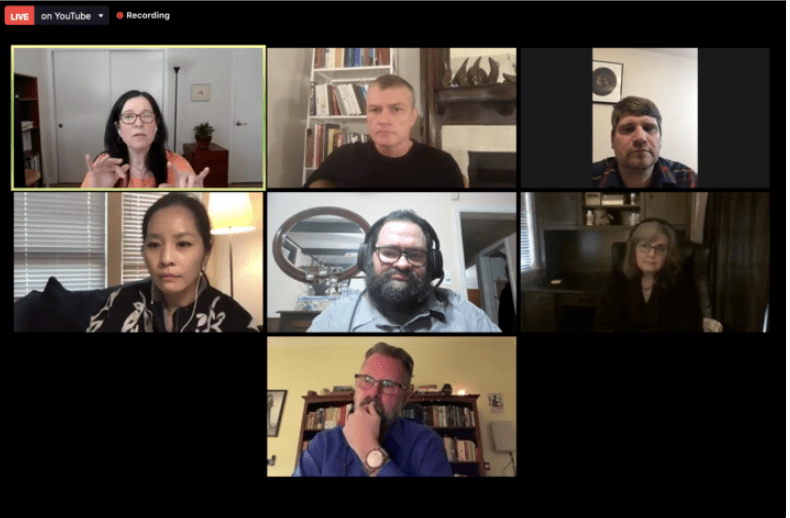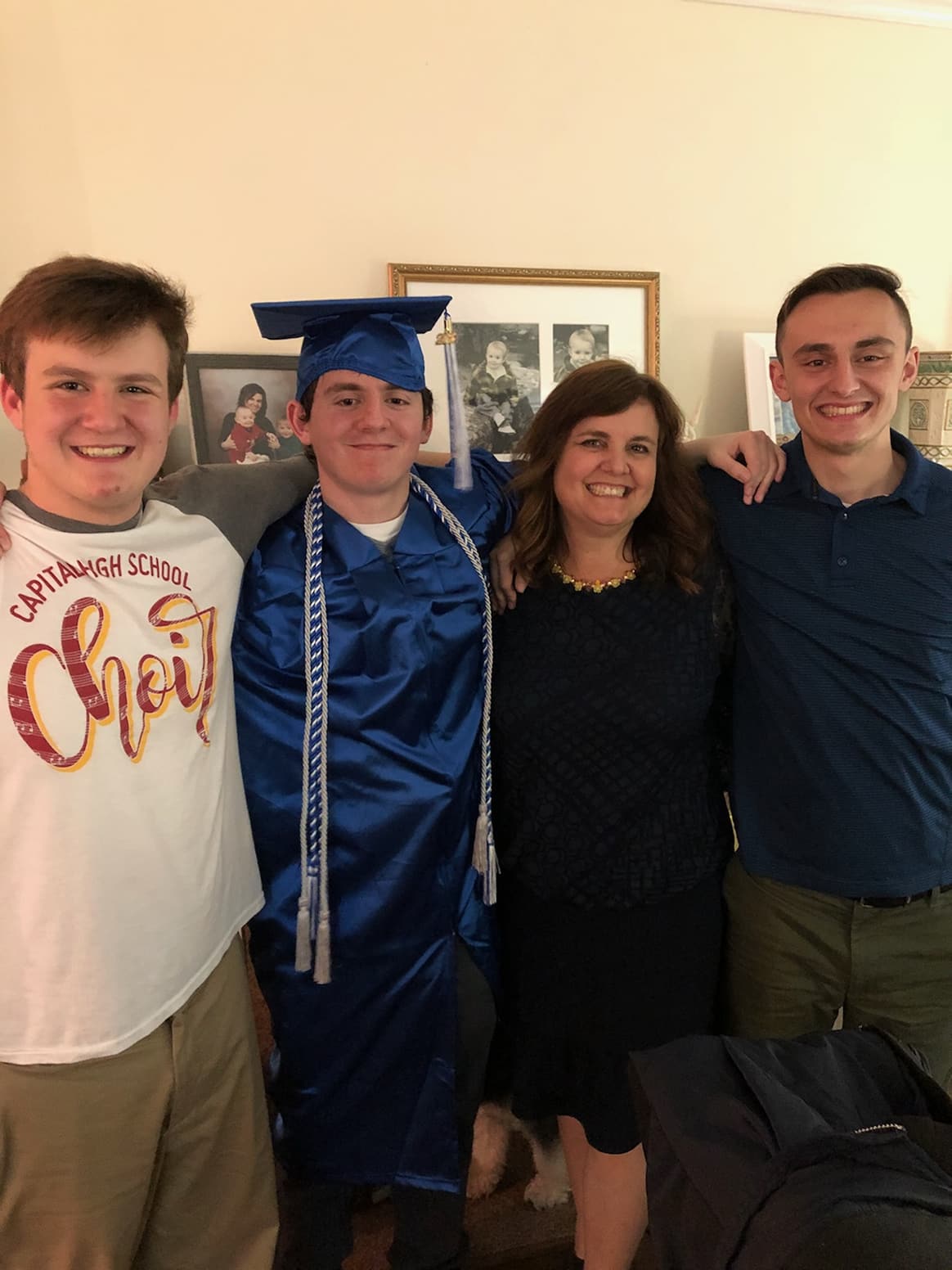Author’s note: Original post here. A few months back I changed my Everyday Aspie blog to Everyday Autistic blog and as a result it’s hard to find and I lost 1000 subscribers. As a solution, I’ll post some things here, once in awhile, in order to keep readers in the loop. I hope you and yours are well during these very challenging times.
A variant of a particular thing is something that has a different form from that thing, although it is related to it. “The quagga was a strikingly beautiful variant of the zebra.” (Collins Dictionary) This makes me think: “The Autistic individual’s way of thinking was a strikingly beautiful variant of the neurotypical’s mind.” The sentence doesn’t imply one is inferior or superior to the other. A zebra is just as cool as a quagga. But they differ. And beauty is in the eyes of the beholder.
VARIANT(biology): a group of organisms within a species that differ in trivial ways from similar groups.
Trivial being a subjective term. Autistic individuals definitely differ from similar groups.
VARIANT(adj): differing from a norm or standard. (definitions.net)
VARIANT(noun): something which differs in form from another thing, though really the same. (Webster dictionary).
I have differences in my neurology, but we are all really the same; we are all human beings and stem from similar biology. We are all part of biodiversity, even as some of us vary significantly from a societal concept of a mainstream norm. The ideal norm doesn’t exist. We are all unique in our makings.
Since starting my journey in the realm of autism, when my middle son was diagnosed at the U.C. Davis Mind Institute in California with Asperger’s Syndrome (2004), I’ve been immersed in learnings related to hidden disabilities and aspects of Western social constructs. My footpath to discovery was lined with groundbreaking pioneers, the likes of Jim Sinclair and his profound literature piece: Don’t Mourn for Us and from the authentic words of Donna Williams including the bestseller book: Somebody Somewhere: Breaking Free from the World of Autism.
There was still much to be learned.
In 2012, I discovered I was on the autism spectrum (diagnosed Asperger’s Syndrome). From the perspective of a mother, woman, professional, and a human being, as my travels continued, to my dismay, I discovered endless stereotypes, inaccuracies, and falsehoods about autism. From educated professionals to the average citizen, autism was seen as ‘broken.’ According to the world, my son and I were ‘broken.’
The vastness of the beautiful autism spectrum was diluted and marred with colors of bleakness and inadequateness.
The social model of disability led me to new awakenings, led me past the bleakness that Western society had marked upon the concept of the Autistic mind.
Moving away from the deficit, medical-model lens of autism enabled me to embrace my identity and the neurodiversity movement.
Further dabbles in aspects of quantum theory, Tibetan Buddhism, and religion and spiritual practices at large, led way to new awakenings of my mind. A time period in my life in which I found that one of Dr. Wayne Dyer’s inspirations and role models was a world-renowned family therapist, Virginia Satir. A tall, remarkably-wise woman I’d sat with as a child under the redwood trees of Northern California; a part of my journey, in which I learned of her teachings. It was then I knew I wanted to be a teacher and a counselor, in some capacity, and told my mother so, at the age of eight. My mind has a way of finding paths that lead back to the beginning.
In my moments of deep introspection, and even in simple moments, such as upon awakening, I often glimpse understandings, and stand as observer, as my mind scaffolds off past-learnings and discoveries. Today, when I awoke, new concepts came to light. Interlinking and interplaying sparks of thoughts.
I’d been reflecting on my self-identity and how to present my identity in a way that resonates with my soul and personhood.
A cornucopia of variances from the norm, diagnosed Aspergers, gifted-intellect and being a dyslexic, dyspraxic, and hyperlexic, I am very much an Autistic woman immersed in a rainbow of transitioning understandings and truths. A true ‘blended-neurodivergent.’
Being I am often speaking internationally on the topic of autism, neurodiversity, and belonging, it is a necessity that I am clear within myself who I am. The names I call myself are a reflection of my selfhood. The labels that I choose carry depth and meaning. How I choose to identify carries great power.
This morning my mind scaffolded of the word ‘neurodivergent.’
Neurodivergent is a person whose neurology (mind/brain) varies significantly from the mainstream of society.
Neurodiversity being a term, movement, and code/paradigm, no one is neurodiverse or neurodiversity. But we are all under the neurodiversity umbrella; and some of us our neurodivergent.
Neurominority is a term coined by some respected, key thought leaders to represent neurodivergent. Another word for neurodivergent with the same basic meaning. It’s an attempt to steer away from the idea that non-neurotypical individuals (e.g., ADHDers, Autistics, Dyslexics) are the negative connotation of ‘divergents.’
But ‘minority’ has its own negative connotations.
In my upcoming book (Autism in a Briefcase: Straight talk about belonging in a neurodiverse world) I elected to use ‘minority’ sparingly. It was only used to emphasize power disparities or provide meaning in context. Even then, I used quotation marks to indicate that the majority group/dominant group is perceiving the subordinate group as outside of a societal norm or majority, as opposed to viewing the distinct individuals in the group with innate complexities.
I also use minority interchangeable with a subordinate group to signify group members/individuals who have differences that set them apart from the mainstream dominant group—individuals who experience narrowed opportunities and limited control or power over their own lives.
I understand ‘minority’ is a concept that represents a group with its own social norms. Yet ‘minority’ also has a tainted history of longstanding oppression of my non-white friends and current and past citizens of the world.
Also, ‘minority’ doesn’t always denote a true minority, numerically-speaking, but a subset of members of society that are perceived as not part of the mainstream; it implies not belonging, exclusion. For instance, “Non-Hispanic whites have fallen to less than 50 percent of the population in the country’s two most populous states, California and Texas.” In cases where the numerical value doesn’t represent an actual minority, what remains is a residue of oppression and exclusion. A means for one group to feel superior toward another.
Exclusion to me is worse than diverging.
I don’t mind diverging from a mainstream norm that has led to corruption, lies, violence, segregation, oppression, and the destruction of earth. Neurodivergent is a term I am okay using, and will continue to use, for now.
In my studies related to intersectionality (a word coined by Kimberlé Crenshaw), I have noted how some Black Americans and other non-white individuals (and their allies) are advocating to move away from the word ‘minority,’ when speaking about a certain marginalized group or member of that group.
In addition, one can be ‘in a minority’ but a person isn’t a ‘minority.’ “Though a group of people may be “in the minority” based on numbers, they should not be labeled ‘a minority’ or ‘the minority.’”
I don’t want to be labeled a ‘neurominority.’ But, I don’t mind if someone else labels themself that. We each have a right to how we self-identify.
While it’s useful to use ‘minority’ to indicate an underserved community of people or to gain access to services and advocate for civil rights, the word is becoming outdated in terms of a personal identity. Perhaps it can serve as a transitional word to prove a point that social justice is urgently required. Those of us who are a part of a neurominority group are declaring to the authorities and powers that be that we deserve basic civil rights, like any other underrepresented minority group in society: the core of the autism movement, turned neurodiversity movement.
I want my self-identity to clearly state my intention.
My intention is to be a strong citizen of the world and to buck against a system of oppression. To stand against othering and ableism and to expose the inner-workings that perpetuate acts of discrimination and inferior/superior mindsets.
As educators or professionals in the field of neurodiversity, it is important to share how different people in a culture self-identify: all the ways, not just my preference: on the autism spectrum, Aspergers, Autistic, with autism, neurodivergent, neurominority, with ADHD, ADHDers, dyslexic, with dyslexia, and so forth.
Another word for neurodivergent is neurodistinct. In my opinion, many of my non-neurodivergent, neurotypical friends are also neuro-distinct. Just not in ways that fit under the neurodivergent umbrella; an umbrella that is vastly expanding to represent a majority of the population (e.g., learning disabilities, mood disorders, brain injury, autism spectrum conditions, Tourettes, etc.)
I think we are all neurodistinct. I don’t want to imply I am better in some way. Though I can see how there are distinct aspects about my neurology and how that label of neurodistinct can be used effectively.
It’s a personal choice.
At one point, I invented neuro-notable; I use it to make a point, but not to self-identify. I am noted for my brain variance in comparison to the mainstream. Notable still has this connotation of being better or worthy of being noted. And it’s a mouthful.
This morning, when I awoke, the idea of the word variant piqued my interest. Specifically: Neurovariant.
By actual definition, variant means that a difference is dictated by a standard. Me being ‘different’ is dictated by societal standards. From now, until a new word pops into my mind or someone else’s mind (or the collective unconscious), I am sticking with Neurovariant (NeuroV) in my presentations and talks. And in my self-identity.
I prefer to be seen as a human being with a beautiful variance from the typical mind.
Marcelle Ciampi M.Ed. (aka Samantha Craft), a respected Autistic author and worldwide advocate, is best known for her writings found in the well-received book Everyday Aspergers. She is also the author of upcoming book Autism in a Briefcase and a contributing author of Spectrum Women: Walking to the Beat of Autism. She serves as the Ambassador and Senior Manager of Diversity, Equity, and Inclusion at Ultranauts Inc., an engineering firm with an autism hiring initiative, featured in the New York Times. Ciampi is credited for contributing to an innovative universal design approach for inclusion. Her resources have enabled 1000s of adults to receive an autism diagnosis. A former school teacher, Ciampi has been featured in various literature, including peer-reviewed journals, the Stanford project: ND GiFTS, ICare4 Autism, Exceptional Needs Today, Autism Parenting Magazine, Oracle, Neuroclastic, ERE, Different Brains, and more. Considered an expert in the field of neurodiversity in the workplace, by key thought leaders, Marcelle has been quoted in multiple books and research studies. Her knowledge is shared through consultancy work at quality enterprises, such as Uptimize and Spectrum Fusion. Marcelle is diagnosed autistic with gifted-intellect, and is also dyslexic, dyspraxic, hyperlexic. http://www.myspectrumsuite.com/











